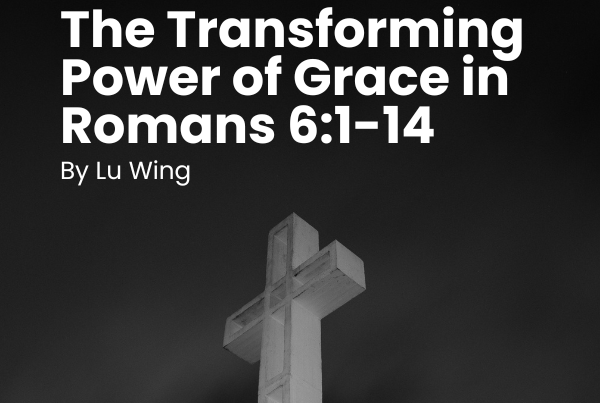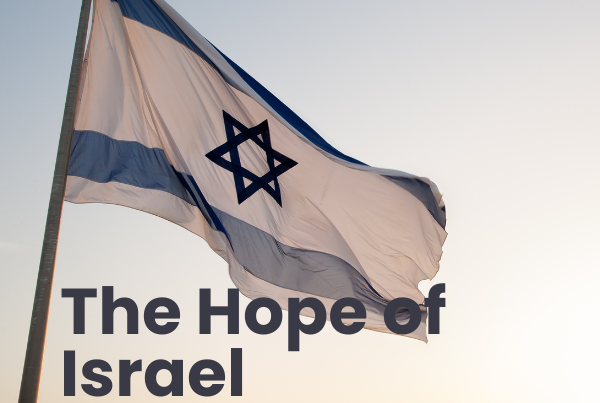
My belief in the rapture of the church is strengthened by an often overlooked, prophetic passage in the book of Leviticus. It is prophetic because it completely outlines and foreshadows the life, death, resurrection and Second Coming of Jesus. It is a blueprint of the Messiah, given to God’s people centuries before Jesus was born on this earth.
These words impacted the way I view prophecy, “And the Lord spoke to Moses, saying, ‘Speak to the children of Israel, and say to them: “The feasts of the Lord, which you shall proclaim to be holy convocations, these are My feasts”’” (Leviticus 23:1-2).
“My feasts,” the Lord said. Not just Jewish feasts, but feasts that God ordained and designed to tell the richest story of all time. The word feast in Hebrew is moed, meaning “a divine appointment.”¹ The Hebrew word for convocation is miqra, which means “a public meeting or dress rehearsal.”²
The seven feasts are dress rehearsals for the most important events in creation!
Passover, Unleavened Bread, Firstfruits, Pentecost, Trumpets, the Day of Atonement and Tabernacles tell the story of the First and Second Coming of Jesus. That is why Paul wrote, “So don’t let anyone condemn you for what you eat or drink, or for not celebrating certain holy days or new-moon ceremonies or Sabbaths. For these rules were only shadows of the real thing, Christ Himself” (Colossians 2:16-17, NLT).
The four spring feasts rehearsed His first coming. Jesus was crucified on Passover. He was buried on the Feast of Unleavened Bread. He rose from the dead on the Feast of Firstfruits, and the Holy Spirit was poured out on the first believers on Pentecost.
The spring feasts were followed by a summer harvest, then the fall feasts were celebrated, rehearsing the Second Coming. The Feast of Trumpets, the Day of Atonement and Tabernacles are dress rehearsals for the Messiah’s return. Trumpets is also called Rosh Hashanah.
Which leads to why I believe in the rapture.
After the summer harvest, often interpreted by Christian scholars as the Church Age, the Feast of Trumpets signals the moment for all the workers to come home. “In the seventh month, on the first day of the month, you shall have a Sabbath rest, a memorial of blowing the trumpets, a holy convocation” (Leviticus 23:24).
I love what Zola Levitt, a Jewish believer who is now with the Lord, wrote:
“The trumpet was the signal for the workers to come into the Temple. The High Priest actually stood on the southwest parapet of the Temple and blew the trumpet so that it could be heard in the surrounding fields. At that instant, the faithful would stop harvesting, even if there were crops, and leave immediately for the worship service.”³
The Feast of Trumpets foreshadows the rapture of the church!
“For the Lord Himself will descend from heaven with a shout, with the voice of an archangel, and with the trumpet of God. And the dead in Christ will rise first. Then we who are alive and remain shall be caught up together with them in the clouds to meet the Lord in the air” (1 Thessalonians 4:16-17).
The Feast of Trumpets is unique because all the other feasts are celebrated later in their respective months, when the moon is bright. Trumpets occurs on the first day of the month, at the new moon, when the moon is dark except for a thin crescent. After the Diaspora, the time when Jews were scattered throughout the world, Rosh Hashanah began to be celebrated over a two-day period, so that Jews living in different time zones could view the new moon and participate. It became known as “one long day” and the Feast of Trumpets became mysterious. Another idiom for it was the Hidden Day Feast or the Feast which you do not know the day or the hour. Sound familiar?
The feasts tell the story.
After the Feast of Trumpets, which foreshadows the rapture of the church, the next feast is the Day of Atonement, or Yom Kippur, which foreshadows the Second Coming of Jesus the Messiah. The Day of Atonement recalls when Moses came down from the mountain, his face shining, and all Israel was saved. In the Second Coming, John saw Jesus appearing, His “head and hair were white like wool, as white as snow, and His eyes like a flame of fire” (Revelation 1). Once again, Israel will be saved as the kingdom of heaven comes to earth.
The final Feast of Tabernacles foreshadows the millennial reign of Christ, and the people celebrate and recognize what God has always intended: to dwell—or tabernacle —with His people. There are many places in Scripture that give us evidence of the rapture, and the timing has been discussed and disputed among the best of Bible scholars and teachers. But nowhere do we see such a clear portrayal of God calling His people home as we do in the prophetic story told by the Feasts of the Lord. One of the best books I’ve read on the feasts is The Feasts of the Lord by Marvin Rosenthal and Kevin Howard who wrote, “Each feast is part of a comprehensive whole. Collectively, they tell a story.” They certainly do tell “the greatest story ever told,” the story of God’s love, redemption and promises to His people:
“In a moment, in the twinkling of an eye, at the last trumpet… the trumpet will sound, and the dead will be raised incorruptible, and we shall all be changed” (1 Corinthians 15:51-53).
¹James Strong, Abingdon’s Exhaustive Concordance of the Bible (1894, reprint, Nashville, TN: Abingdon, 1986), 83, ref.4150, Hebrew and Chaldee Dictionary.
²Strong, Strong’s Exhaustive Concordance, 94, refs.4744, 7121, Hebrew and Chaldee Dictionary
³Zola Levitt, The Seven Feasts of Israel (Dallas, TX: Zola Levitt Ministries, 1979, 2012), 12.









